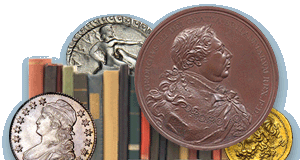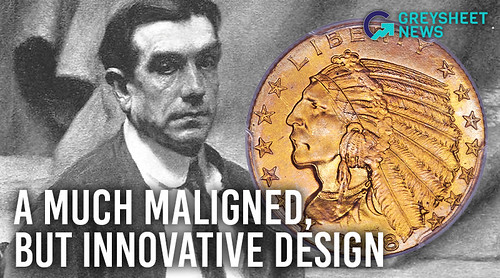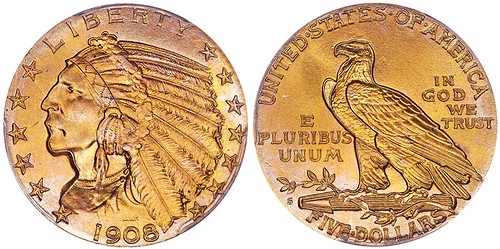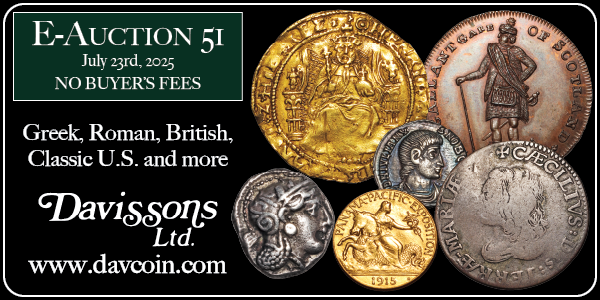
PREV ARTICLE
NEXT ARTICLE
FULL ISSUE
PREV FULL ISSUE
PRATT'S UNUSUAL INCUSE DESIGNSA Greyheet article by Michael Garofalo discusses sculptor Bela Lyon Pratt and his innovative incuse designs for the the Quarter Eagle ($2.50) and Half Eagle ($5). Here's an excerpt - see the complete article online. -Editor Dr. William Sturgis Bigelow was a close friend of President Roosevelt. He was one of the most pre-eminent experts on Japanese art and culture. On returning home to Boston after a long trip to Japan, Senator Henry Cabot Lodge, another friend of Bigelow's and of Pratt's, told Bigelow about the magnificent Saint-Gaudens coinage but also about the problems with the smaller denominations.
Bigelow wrote to Roosevelt, in January of 1908, and stated that he was Pratt studied Saint-Gaudens' Double Eagle and the Eagle coin designs and was undoubtedly influenced by them. But unlike Saint-Gaudens' Eagle obverse, Pratt did not attempt to depict Miss Liberty wearing a headdress. Instead, Pratt used a photograph of an unidentified male Native American as his inspiration for the obverse side of the coin. Pratt made several models of his design and sent one to Bigelow to present to Roosevelt. At a lunch meeting in April of 1908, Bigelow presented the design to Roosevelt, who was enthusiastically supportive of Pratt's design. That was all of the incentive that was required, and Pratt went about finishing his designs on both smaller coins. Not only was Pratt's decision to use a photograph of a Native American man instead of an allegorical representation of Miss Liberty wearing a Native headdress imaginative, but the method of Pratt's actual design, using an incuse design rather than a high relief design protected by an even higher rim, was innovative and borderline extraordinary. No American coins had ever been struck using an incuse design. On an incuse design, the design is ‘sunk into' the coin and is lower than the fields. Prior to these two coins, all coins had a relief design where the subject matter was higher than the connecting fields. The designs were, in theory and in practice, protected by a slightly higher edge rim. The U.S. Mint typically did not like dramatic changes such as this, and many complaints about working with this design and the unlikelihood of it striking well were numerous from staff at the Philadelphia Mint. By November of 1908, both of these denominations of coins were being struck and eventually released to the American public. But comments on both sides were plentiful and pointed.
In the November of 1908 issue of the American Numismatic Association's publication, The Numismatist, Howland Wood authored an article discussing the issue, and it was titled as
But just three months later, in the February 1909 issue of the same periodical, there was a scathing critique of these same coins by Philadelphia dealer S. H. Chapman. His article was penned in a letter to President Roosevelt, which attempted to discredit all aspects of the design.
To read the complete article, see:
Wayne Homren, Editor The Numismatic Bibliomania Society is a non-profit organization promoting numismatic literature. See our web site at coinbooks.org. To submit items for publication in The E-Sylum, write to the Editor at this address: whomren@gmail.com To subscribe go to: Subscribe All Rights Reserved. NBS Home Page Contact the NBS webmaster 
|


